When troubleshooting issues on your motherboard or contacting official support, please be sure to know the motherboard revision.
I know what your motherboard’s revision is more helps pinpoint the cause of your issues. For instance, if a problem lies with the BIOS, then the motherboard’s modification will help figure that out.
Fortunately, it is relatively easy to find the exact revision of your motherboard. You can do the good old physical inspection of your motherboard or use certain in-Windows services or third-party software to determine the modification of the motherboard and the BIOS.
In this article, I will talk in detail about motherboard revision. I will also discuss BIOS revision and how to find both your PC’s motherboard and BIOS revision.
TABLE OF CONTENTS
What is Motherboard Revision?
A motherboard revision, as the name suggests, is its latest iteration. It indicates whether it has been improved upon or not.
The first revision of the motherboard is Rev 1.0 or Rev 1. If there is an improvement made to the motherboard, the designation changes to 1.1, then to 1.2 so on.
Again, you have the original motherboard if you have a Rev 1.0 motherboard.
The changes that a motherboard can have with subsequent revisions include:
- Better cooling design
- Newer BIOS capable of supporting newer CPUs
- Better PCB design
- Better structure quality
- Newer headers etc
So essentially, when you have the same boar,d but only a slight change has been made, it is labeled with a newer motherboard revision of the original motherboard.
Example of Motherboard Revision 1.0 vs. 1.1
The following examples show what a difference between version 1.0 and 1.1 can entail:
Structural and Connectors Difference
Often, you can find improved ports and more robust slots with each newer revision.
Here we have the Gigabyte GA-B75M-D3H.
The first image shows Rev 1.0, and the second one shows Rev 1.1 with the highlighted differences.
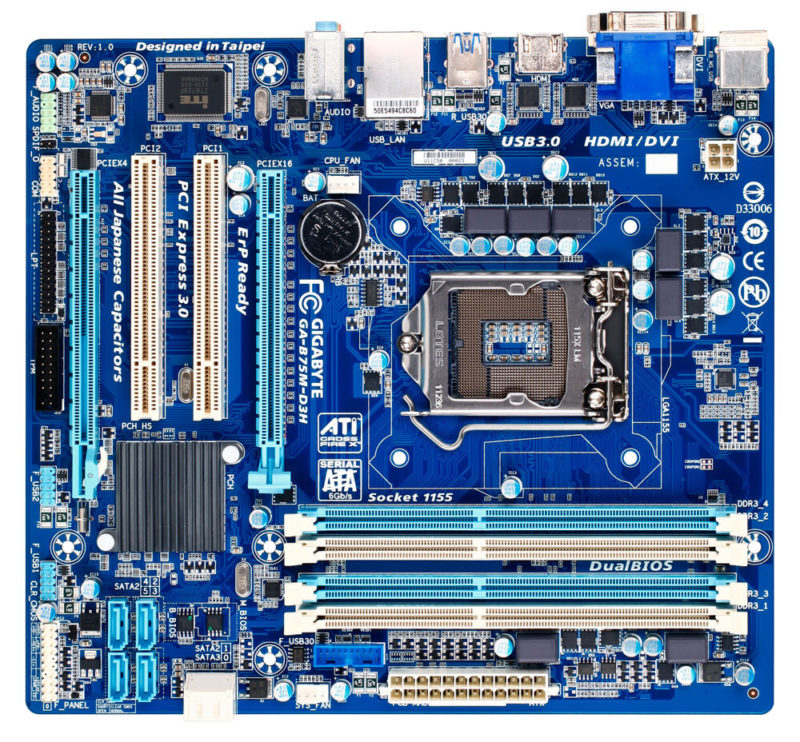
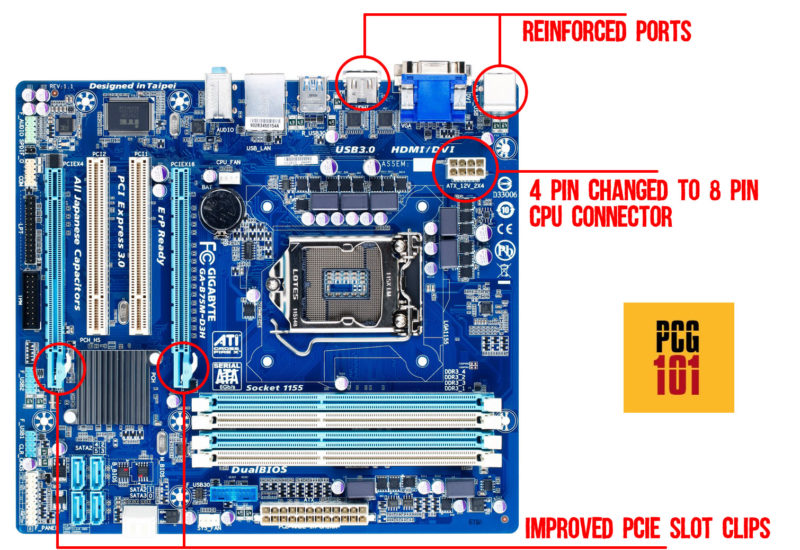
Subtle Component Changes
Other times the difference between revisions of motherboards is more subtle.
For instance, the difference between the Gigabyte B550 Auros Elite AX V2 Rev 1.0 and Rev 1.1 is that the former uses the Intel WiFi 6, whereas the latter uses the AMD WiFi 6.
How to Find Motherboard Revision?
You can check your motherboard revision in two simple ways:
- Through Physical Inspection
- Through CPU-Z
1. Identifying Motherboard Revision Through Physical Inspection
The first and easiest way to figure out what revision of the motherboard you have is to have a look at the motherboard physically.
On the motherboard’s sides and edges, you can often find a label indicating what revision your motherboard belongs to.
Take, for instance, the GA-P67A-UD3 motherboard below. On the bottom left corner of my motherboard, I see the revision labeled Rev 1.0.
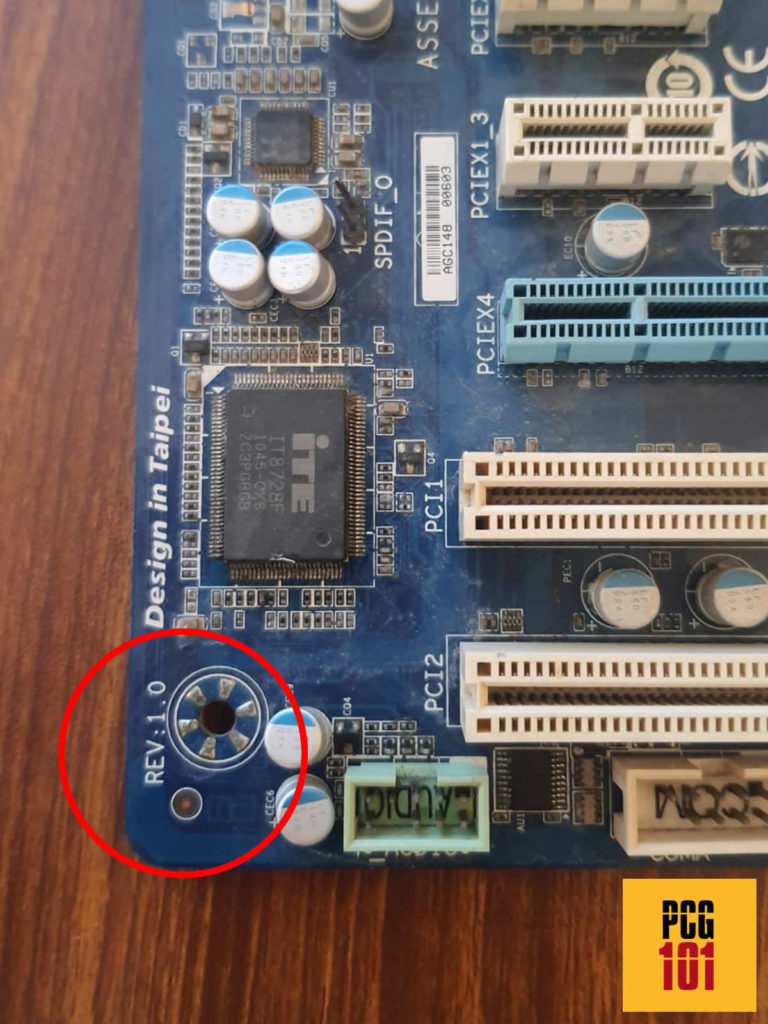
2. Finding Out Motherboard Revision Through CPU-Z
CPU-Z is a reasonably popular free third-party software that can shed plenty of information regarding the hardware you have.
This is a very light utility and almost always a must for anyone wanting to troubleshoot issues or understand the PC hardware they have.
- Download CPU-Z from the official website.
- Install it and Run it.
- Once it starts, head over to the “Mainboard” Tab.
- Look for the two fields in the model name column.
- The first field in the column is the motherboard’s model name (in my case, 8259).
- The second file indicates the version of the motherboard. This is the field of interest to you. (in my case, 83.45)
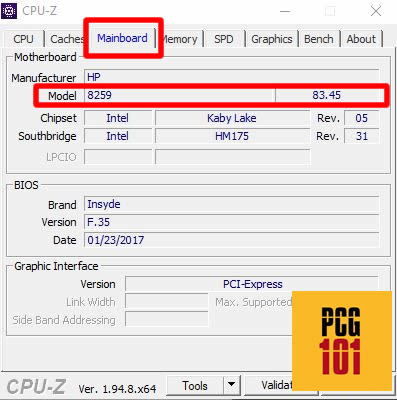
In my case (I am on a computer at the moment), the revision of the motherboard is 83.45. Could you stay clear by this number? Laptop motherboards follow a different standard for modifications.
You would see a more logical number sequence on a desktop, such as 1.0. 1.1, 1.2, or in the form of 1, 2, 3, 4.
Also Read: How to Check What Motherboard You Have?
What is BIOS Revision?
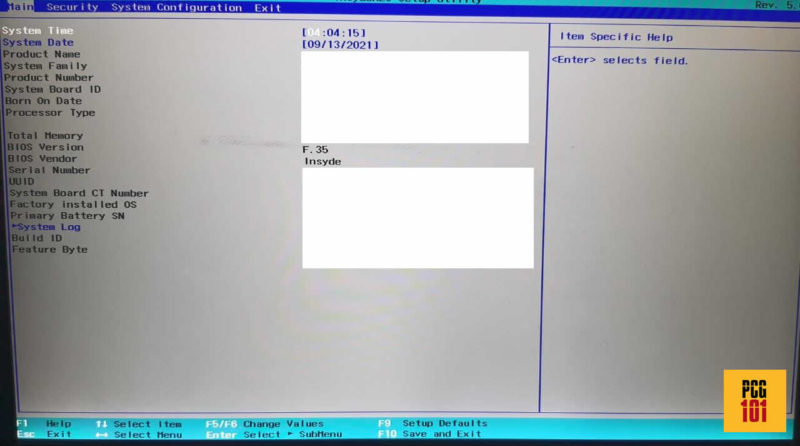
BIOS Revision refers to the current version of the BIOS installed in your system.
BIOS is the initial firmware that fires up when you turn on your PC. It checks the hardware and operates them at the parameters set within.
The revision of the BIOS has a significant impact on your PC’s hardware. For instance, the BIOS version dictates what CPUs are compatible with your motherboard.
For instance, when the 400 series AMD chipsets were released, i.e., AMD B450 with the AM4 socket, they were initially compatible only with the AMD 1000, 2000, and 3000 series CPUs.
However, since the AMD 5000 series also uses the same AM4 socket, they needed their BIOS upgraded to make them compatible with the B450 motherboards.
In addition, some BIOS versions offer extensive control over your hardware, allowing you to overclock. Others, however, particularly on laptops, are more restricted versions.
Newer BIOS, now known as UEFI, have a more robust graphical user interface and can interface with the mouse cursor, while others have mundane looks and are controlled only by the keyboard.
How to Find Out ABOUT BIOS Revision?
There are many ways to check the BIOS version
- Checking Through DXDIAG
- Checking Through BIOS Itself
- Checking Through CPU-Z
1. Check Through DXDIAG – DirectX Diagnostic Tool
This is the easiest and the most comprehensive way to check what BIOS version you have installed on your PC.
- In Windows 10, go to Windows Search in the Task Bar
- Type DXDIAG
- Select the DXDIAG program, which should open the window as shown below.
- Look for the row with the BIOS version
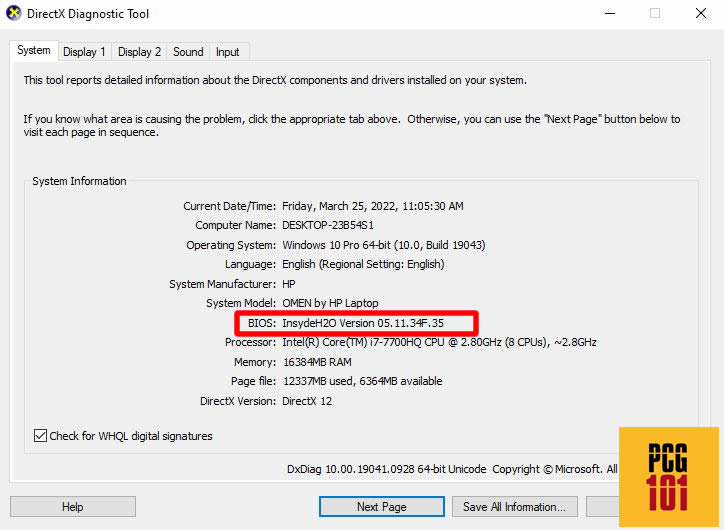
I can see here that the BIOS version I have is InsydeH20 Version 05.11.34F.35
2. Check the BIOS Revision Through the BIOS Itself
Of course, you check out what version of the BIOS you have through the firmware itself.
On Windows startup, go to your BIOS. In the Main or the General section, look for fields similar to “BIOS Version” and “BIOS Vendor.”

My BIOS version, as indicated above, is Insyde F.35.
3. Checking BIOS Version Through CPU-Z
Finally, you can use the free third-party software CPU-Z to check the BIOS version.
With the utility downloaded, installed, and running. Head to the “Mainboard” section and look for the field marked as BIOS.
Here you can see your BIOS’s Brand (vendor), its Version, and its date.
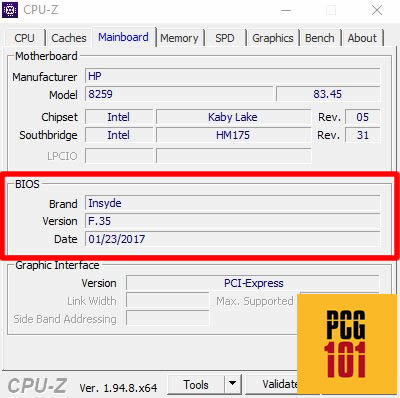
Final Words
So what is motherboard revision? A motherboard revision indicates whether the original was initially designed and has been improved.
Revision 1.0 indicates the original version. If there have been subsequent versions, such as Revision 1.1, and 1.2 of the same motherboard, improvements have been made.
When troubleshooting issues, you must know both the motherboard and BIOS revisions.
FREQUENTLY ASKED QUESTIONS
1. Can you upgrade a motherboard revision, or do you need to replace the entire motherboard?
Motherboard revisions typically cannot be upgraded because the changes made are usually physical and structural, and cannot be altered or modified. If you need to upgrade your motherboard, you will need to replace it with a newer revision.
2. What should you do if you can’t find the revision number of your motherboard?
If you can’t find the revision number of your motherboard, you should consult the motherboard manual or contact the manufacturer’s support team for assistance.
You can also try using third-party software tools that can detect and display system information, including the motherboard revision.
3. How often do motherboard revisions get updated, and how can you stay informed about new releases?
Motherboard revisions can be updated at any time, depending on the manufacturer’s design and development cycle. You can stay informed about new releases by visiting the manufacturer’s website or following them on social media platforms.
Additionally, technology news websites and online forums can provide updates on new hardware releases and revisions.
4. What factors should you consider when selecting a motherboard revision for your hardware setup?
When selecting a motherboard revision, you should consider the compatibility of your hardware components, the performance requirements of your applications, the number and type of expansion slots you require, the size and form factor of your case, and your budget.
5. Is there a specific procedure for upgrading or replacing a motherboard revision, and what precautions should you take?
Yes, there is a specific procedure for upgrading or replacing a motherboard revision, and it varies depending on the system and components involved.
Generally, you should backup your data and prepare the necessary drivers and software before starting the process.
You should also power off the system, unplug all cables, and ground yourself to prevent electrostatic discharge.
Careful handling of the motherboard and its components is crucial to avoid damage.
It’s important to follow the manufacturer’s instructions and guidelines for upgrading or replacing a motherboard.
